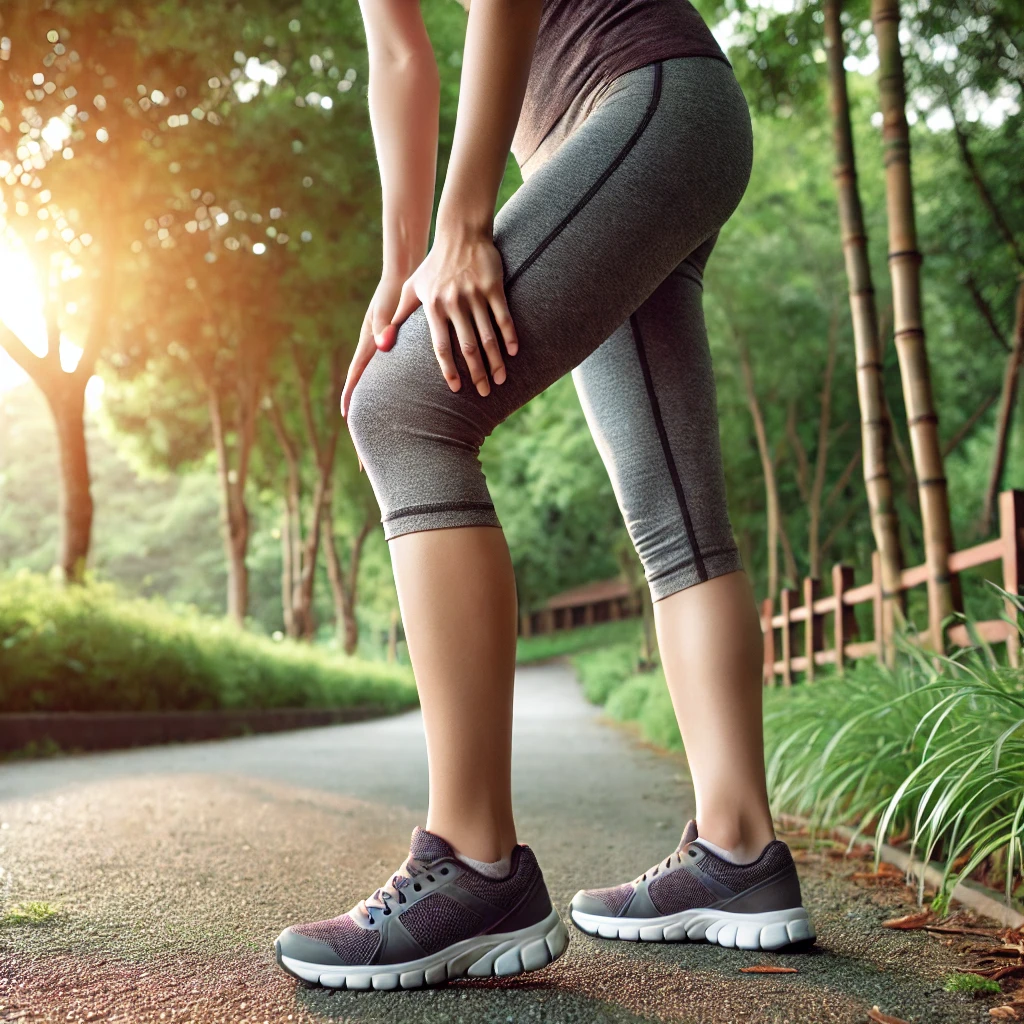If your knees ache every time you climb stairs, or your hips protest when you stand up, you’re not alone. Nearly one in four American adults lives with arthritis, and that joint discomfort can make even simple daily tasks feel overwhelming.
Here’s what surprised me when I started researching joint-friendly workouts: moving more actually reduces pain, not increases it. I know that sounds counterintuitive when your joints are already screaming. But after digging into the latest research and talking with physical therapists, I’ve learned that the right exercises can transform how your joints feel—without making you suffer through high-impact torture.
Why Exercise Helps Joint Pain (The Science Is Clear)
A comprehensive 2025 analysis of nearly 10,000 patients found that aerobic exercise consistently ranked highest in reducing knee pain and improving function. The researchers examined over 217 studies and the verdict was unanimous: staying active beats staying still.
When you move your joints regularly, something remarkable happens. Physical activity replenishes lubrication to the cartilage and reduces stiffness. Think of it like this—your joints produce their own natural oil (synovial fluid), but they only make it when you use them.
Exercise also tackles joint pain from another angle: weight management. Research published in Arthritis & Rheumatism found that losing just one pound of weight removes four pounds of pressure from your knees. That means dropping 10 pounds relieves 40 pounds of stress on your joints with every single step.
But here’s the catch—not all exercise works equally well for painful joints. High-impact activities like running or jumping can make things worse. What you need are gentle, low-impact movements that build strength without beating up your joints.
The 7 Best Low-Impact Exercises for Joint Pain Relief
Based on current clinical research and expert recommendations, these exercises deliver maximum pain relief with minimum joint stress.
1. Walking: The Underrated Joint-Saver
Walking doesn’t require fancy equipment or a gym membership. A daily 30-minute walk at a brisk pace helps with joint mobility, flexibility, and cardiovascular health.
Start small if you’re not used to walking regularly. Even 10 minutes three times daily adds up. Try walking on soft surfaces like grass or dirt trails when possible—they’re easier on your joints than concrete.
Pro tip from experience: I found that walking right after waking up, when joints are stiffest, actually helps them loosen up faster than waiting until later in the day.
2. Swimming and Water Aerobics: Zero-Impact Wonder
Water exercises are brilliant for anyone carrying extra weight or dealing with severe joint pain. Swimming and water aerobics provide activity without adding pressure to lower body joints.
The buoyancy of water supports your body weight, so your joints experience almost no impact. Meanwhile, the water’s resistance gives your muscles a solid workout. It’s the best of both worlds.
Look for heated pools if possible—warm water (83-88°F) feels amazing on achy joints and helps muscles relax.
3. Stationary Cycling: Knee-Friendly Cardio
Cycling strengthens leg muscles while putting less stress on joints compared to weight-bearing exercises. You can adjust the resistance to match your fitness level and gradually increase intensity as you get stronger.
Here’s something I learned the hard way: adjust your seat height correctly. Your knee should have a slight bend (about 25-30 degrees) when the pedal is at its lowest point. This prevents unnecessary knee strain.
4. Gentle Stretching and Range-of-Motion Exercises
Stretching improves muscle flexibility, helping joints move through their full range of motion and warding off pain and stiffness.
Focus on these key stretches:
- Hamstring stretch: Lie on your back, lift one leg toward the ceiling with your knee slightly bent. Hold for 20-30 seconds per leg.
- Hip butterfly stretch: Sit with the soles of your feet together, gently press your knees toward the floor. This opens up tight hip joints.
- Shoulder wall climbs: Face a wall and slowly “walk” your fingers up as high as comfortable. This builds shoulder flexibility without weights.
Hold each stretch for 20-30 seconds without bouncing. Stretching should feel like mild tension, never sharp pain.
5. Strength Training with Light Weights
Building muscle around your joints provides better support and reduces pain. Low-impact strength exercises with light weights, resistance bands, or body weight can be very effective for joint health.
Start with these beginner-friendly moves:
- Seated leg extensions: Sit in a chair and slowly straighten one leg, hold briefly, then lower. This strengthens the quadriceps that support your knees.
- Wall push-ups: Stand arm’s length from a wall and do push-ups against it. Much easier on wrists and shoulders than floor push-ups.
- Bicep curls: Use 2-3 pound weights or resistance bands. Strong arms reduce elbow strain.
The key phrase to remember: “Start low and go slow.” Begin with just one set of 10 repetitions and gradually increase over weeks.
6. Yoga: Flexibility Meets Strength
Yoga combines stretching, strengthening, and balance training—all in one joint-friendly package. Low-impact activities like yoga and Pilates strain joints less than higher-impact activities like running or tennis.
Look for beginner or “gentle” yoga classes. Chair yoga is excellent if getting down on the floor is difficult. Many YouTube channels offer free joint-friendly yoga routines you can do at home.
Personal insight: When I started yoga, I couldn’t touch my toes. Within three months of twice-weekly practice, my knee pain during regular activities dropped noticeably.
7. Balance Exercises: Fall Prevention That Reduces Pain
Balance exercises improve mobility and strength, which is especially important for older adults to avoid falls that can lead to joint injuries.
Try these simple balance moves:
- Single-leg stands: Stand on one foot for 30 seconds, using a chair for support if needed. Switch legs and repeat.
- Heel-to-toe walking: Walk in a straight line, placing your heel directly in front of your toes with each step.
Better balance means fewer awkward movements that jar your joints unexpectedly.
The Weight Loss Connection: Why It Matters for Your Joints
If you’re carrying extra pounds, weight loss might be your most powerful joint pain relief strategy. Research shows that losing 10 to 20% of your body weight improves pain, function, and quality of life better than losing just 5%.
Here’s why this matters so much: When you walk on level ground, the force on your knees equals about 1.5 times your body weight. Go up stairs? That jumps to 2-3 times your weight. Squat down? Now it’s 4-5 times your body weight compressing those knee joints.
But there’s more to it than just mechanical pressure. Fat tissue creates and releases inflammatory chemicals into your body, and reducing fat stores decreases overall inflammation. This explains why weight loss can help even non-weight-bearing joints like your hands.
The good news: you don’t need to lose 50 pounds to feel relief. Doctors recommend starting with a modest goal of 5-10 pounds to get some relief. Small victories create momentum.
Critical Safety Tips for Exercising with Joint Pain
Following these guidelines prevents setbacks and keeps you moving consistently.
Warm up properly: Spend at least 5-10 minutes preparing muscles and joints with gentle cardio or dynamic stretches before exercising. Cold joints are injury-prone joints.
Listen to your body: Some muscle soreness after exercise is normal and temporary. Sharp pain or pain that worsens means stop immediately. If pain doesn’t go away or worsens, talk to your doctor.
Start with short sessions: If you haven’t exercised in a while, begin with just 5-10 minutes daily. Gradually work up to the recommended 150 minutes of moderate activity per week.
Rest between workouts: Three or four workouts per week is a good benchmark. Your joints need recovery time, especially when starting out.
Focus on form over intensity: Doing exercises correctly matters more than doing them quickly or with heavy weights. Poor form causes injuries that set you back.
Frequently Asked Questions
Can exercise really help joint pain or will it make things worse?
Exercise absolutely helps when done correctly. Recent studies show aerobic exercise effectively reduces pain and improves movement in patients with knee osteoarthritis. The key is choosing low-impact activities and starting gradually. High-impact exercises like running might worsen pain, but walking, swimming, and cycling typically reduce it.
How often should I exercise if I have arthritis?
Aim for at least 150 minutes of moderate-intensity aerobic exercise per week, plus two sessions of strength training. You can break this into manageable chunks—even 10-minute sessions count. Take rest days between strength training sessions and add an extra day off if joints are swollen or particularly painful.
Which exercises should I avoid with joint pain?
Skip high-impact activities that pound your joints: running, jumping rope, high-intensity interval training (HIIT), and plyometric exercises. Also avoid exercises that twist joints unnaturally or cause sharp pain. Stick with swimming, walking, cycling, yoga, and gentle strength training instead.
How long before I notice improvement in my joint pain?
Most people notice some improvement within 4-6 weeks of consistent exercise, though individual results vary. A 2025 study found that a strength exercise program significantly reduced pain intensity in knee osteoarthritis patients over just 4 weeks. Patience and consistency matter more than intensity.
Should I exercise when my joints are swollen or inflamed?
During acute flare-ups with significant swelling, focus on gentle range-of-motion exercises rather than strength training or aerobics. Moving joints gently prevents stiffness without aggravating inflammation. If swelling persists beyond a few days or worsens, consult your doctor before continuing your exercise routine.
Your Next Steps to Less Joint Pain
Joint pain doesn’t have to steal your mobility or quality of life. Start with one or two exercises from this list and commit to doing them three times this week. Walking and water exercises work especially well for beginners.
Remember: Physical therapists note that patients who move easier because of reduced pain are more likely to stay active, creating a healthy cycle that promotes fitness and continued improvement.
If you’re dealing with unexplained joint pain that limits daily activities, or if pain worsens with movement, schedule an appointment with your healthcare provider. They can rule out underlying conditions and create a personalized exercise plan suited to your specific needs.
Last updated: November 2025
About FitLifePortal: Your trusted source for evidence-based fitness guidance, healthy living tips, and practical wellness strategies that fit real life.







